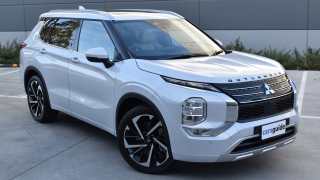
Hino 300 Hybrid review
Just like mobile phones and computers, electrified trucks are advancing quickly. The last Hino Hybrid was a fairly effective machine, but the new version makes it look and feel out-of-date. Working Wheels has hit the road in Hino's 300 Hybrid and it is impossible to miss the improvements.
Of course, the entire 300 Series range has been made better with a recent update which included an all-new wide-cab and an array of upgrades including electronic stability control, but the hybrid model has also been given a lot of attention. Frankly, it needed it because the last Hino 300 Hybrid was not as advanced as its opposite number at Mitsubishi Fuso, the Canter Eco Hybrid.
Hino has hit back and although it still uses nickel-metal hydride battery technology, which is being replaced by lithium-ion (used in electric cars, top power tools and the Canter hybrid), the new 300 series Hybrid is significantly more advanced. This writer wasn't expecting much before the test drive and was pleasantly surprised.
Like the Eco Canter and the last Hino Hybrid, the diesel engine must tick over when the truck is going. It is needed to power components such as the hydraulic power steering. However, the new Hino Hybrid can now accelerate gently without increasing diesel engine revs, using the electric motor for propulsion instead (as is the case with the Canter hybrid).
Of course, if you accelerate hard the diesel engine will start providing assistance and it will kick in when you reach higher speeds regardless of how easy you go on the accelerator. In really bad stop-start traffic you could go some way using only the electric motor for forward movement.
One of the best parts about the new Hybrid is the five-speed automated transmission. The last model was available with a manual or a full automatic and both had issues.
Drivers tended to over-rev the manual model out of habit, rather than relying on the extra torque of the electric motor. The automatic wasn't really compatible with the stop/start system, which kills the motor at idle to save fuel. The driver had pull on the handbrake and select neutral to get the engine to switch off automatically, which just too hard for most.
Now, the driver doesn't have to do anything and the engine will stop and then start up when he or she is ready to get going again. The automated transmission works very well and the shifts are quite quick. Better yet, the driver doesn't have the hassle of working a manual box and the boss gets some fuel savings because it doesn't get over-revved and switches off at idle.
Of course, the start-stop system can be over-ruled if the operator prefers to have the engine running at idle. The automated transmission can also be told what to do and can be flicked into sequential manual mode should the driver want more control.
As for the performance, we didn't have much of a load on but the Hybrid appeared as responsive as the regular diesel model.
The low down torque is good thanks to the extra torque of the electric motor which assists the 4.0-litre four-cylinder turbo diesel which has 10 per cent more power, for a total of 110kW and 19 per cent more torque, for a total of 420Nm. The electric motor 36kW of power and 333Nm. It is fed by a 40-module battery (240 cells), which is already operating in the Lexus RX 450h SUV.
Thanks to a new layout that allows the diesel engine and electric motor to be operated separately, the Hino Hybrid can get the best out of both powerplants. It is now able to take as much or as little power from either power source and the split is infinitely variable.
Working Wheels mentioned in previous tests that both the Eco Canter and Hino Hybrid were lacking trip computers, with instant and average fuel economy readings. Now the Hino has one and it will be helpful especially when a driver is interested to see how his or her driving is impacting the fuel consumption.
Hino says the Hybrid model will use up to 26 per cent less than a diesel-only model, although the figures change dramatically depending on how the truck is used. We'll have to wait for some firmer figures in real world conditions, but either way the new Hino Hybrid is a much-improved truck that makes saving fuel far easier than before.
N/A





